Adirondack Wilderness
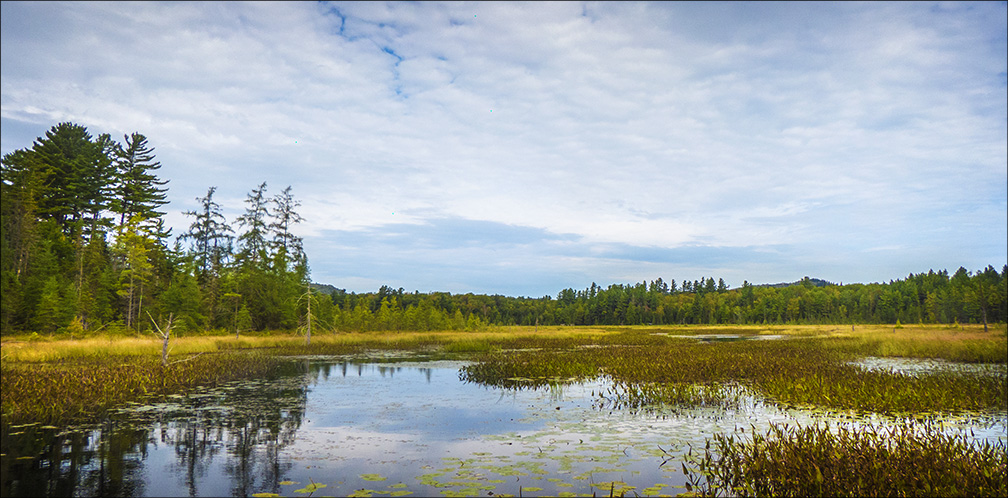
After the glaciers that sculpted the Adirondacks retreated some 13,000 years ago, glacial ice was replaced by tundra, then by boreal forests. These boreal forests were later replaced by a mix of boreal and temperate forests that comprised the Adirondack wilderness of the early 17th century, when European settlers arrived in the New World. A harsh climate and poor soil had discouraged the Native Americans who occupied the valleys around the mountains from permanent residence in the mountains and initially inhibited exploitation by the European newcomers.
In time, however, the Adirondack wilderness that greeted European settlers succumbed to economic pressures that were reshaping the landscape throughout North America. The wilderness we see today is not the original, post-glacial wilderness, but a recovering wilderness. Natural forces are gradually repairing the initial man-made scars of logging, mining, and farming; however, this process is shaped by ongoing human impacts, including development, acid rain, and climate change.
The Post-Glacial Adirondack Wilderness
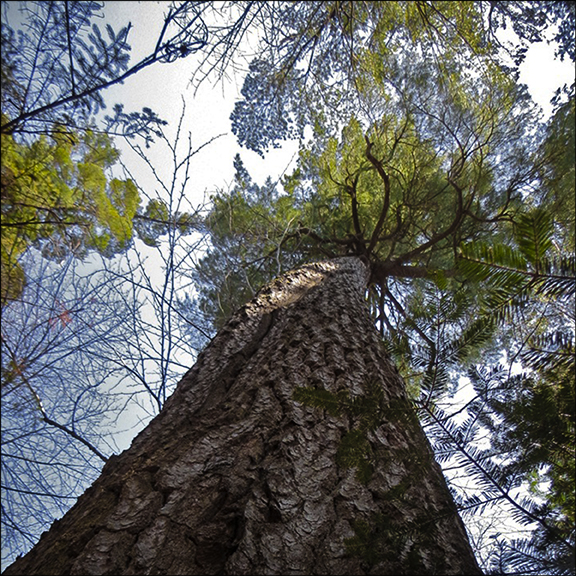
The retreat of the ice sheet in response to a warming climate prompted a northward migration of plant species, returning from warmer southern regions. The record of their return (and, in some cases, subsequent departure northward) is written in fossilized sediments preserved in the bottom of bogs or in the bottom sediments of small lakes.
- The post-glacial colonization process began with a handful of tundra-dwelling species, such as Dwarf Birch, Alpine Club Moss, and Northern Blueberry. Most disappeared, but a few still persist on the Adirondack High Peaks.
- Then, as the climate gradually warmed, boreal forests of spruce and fir appeared and gradually replaced the arctic tundra. These early post-glacial forests were initially dominated by White Spruce, which later gave way to Balsam Fir and, in some places, Paper Birch (the first hardwood to arrive, about 10,000 years ago). Eastern White Pine appeared around 9,000 years ago.
- By the time the warming period peaked (about 6,000 years ago), many hardwood species had reappeared in the Adirondacks, including Yellow Birch, Sugar Maple, and American Beech.
- As the region started to cool again, Yellow Birch increased; and Red Spruce appeared, quickly becoming the dominant conifer.
- By the beginning of the 19th century, the virgin forests that greeted the first land surveyors and settlers reflected about a 50/50 balance of softwoods (conifers) and hardwoods (deciduous trees).
Little of this early wilderness remains. How much of the Adirondacks is first-growth forest (forest that has not been disturbed by logging, mining, farming, or other human impacts)? The short answer is that we don't know, because these areas have yet to be mapped. Nor is there general agreement on what constitutes "first growth" (areas untouched by human impacts) and "old growth" (areas that were minimally disturbed and left undisturbed for a century or more). As a result, estimates vary.
- Botanist Edwin Ketchledge estimated that about 200,000 acres of forest (about 3% of the Adirondacks) could be considered first-growth.
- Environmentalist Barbara McMartin estimated in 1994 that about 500,000 acres (8-9%) could be considered old growth, which she seems to equate with "relatively untouched forest," meaning that it was never logged or logged "minimally."
- In 2002, Bruce Kershner estimated that old-growth forest in the Adirondacks consisted of about 150,000 acres.
- Jerry Jenkins estimates that about 586,000 acres (9.6% of the Park) has never been logged or seriously affected by storms or fire.
- Botanist and forest historian Michael Kudish estimates that perhaps 5-10% of the Adirondacks is first-growth forest, most of it in locations not accessible to – or profitable for – loggers.
In any event, the vast majority of the pre-settlement forests have disappeared, having experienced at least one major impact from human activity.
Wilderness Invaded: Farming the Adirondacks
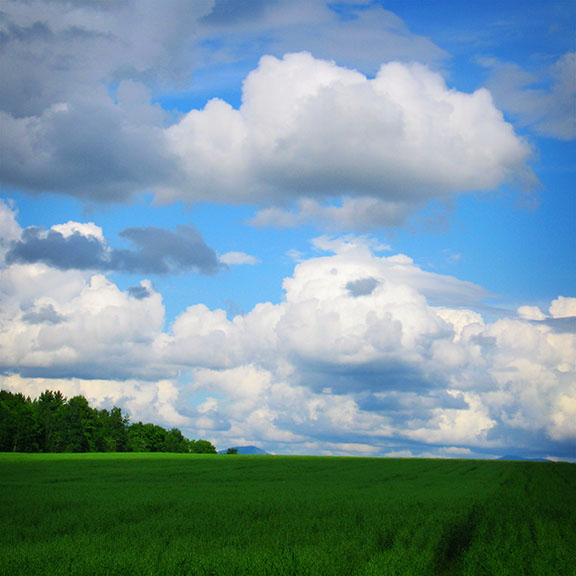
The impact of agricultural land use in the Adirondacks was and continues to be limited by the fact that most places within what is now the Adirondack Park make lousy farmland. Soils are thin and infertile; winters are long; and the growing season is short. Native Americans settled in the lowland areas on the (mainly southeastern) periphery of the Park, but (according to most accounts) wisely avoided permanent settlement in the mountainous areas, using them only in the summer to hunt and fish.
Starting in the late 17th century, the extent of agricultural land use in the Adirondacks increased significantly, as Europeans invaded the lowlands where the soil is more fertile and the slopes less steep.
- By 1800, only thin strips of land on the southern edge of what is now the Adirondack Park had been cleared for farming.
- By 1885, according to a map produced by the Sargent Commission, 27.8% of the Adirondack Park had been cleared, some for fuel for forges and bark for tanneries and some (the valleys) for agricultural use.
- The Adirondack upland in the interior was settled last, in the mid-19th century, and, in most areas, never cleared for agriculture, because the land was so unsuitable. Some lowland areas near the major rivers were settled by farmers; other farms appeared near the Great Camps to provide agricultural products for the wealthy who summered there.
Many of these farms had been abandoned by the early 20th century, as Adirondack farms on more marginal ground succumbed to competition from farms in more fertile areas outside the park. With the exception of a few farms in small pockets of arable land in the Adirondack interior, farming is now limited to the Champlain and St. Lawrence Valley areas.
- Some old farm fields were left to fill in naturally through a process called old field succession.
- Other areas were planted with conifers, such as Red Pine and Scotch Pine, as part of a reforestation program sponsored in the 1920s and 30s by the state.
In any event, the abandonment of Adirondack farmland has resulted in an expansion of second-generation forest and, ironically, a loss of some of the stunning vistas of the early and mid-twentieth century, when the open fields framed breathtaking views of the mountains beyond.
Wilderness Ravaged: Exploiting the Forests
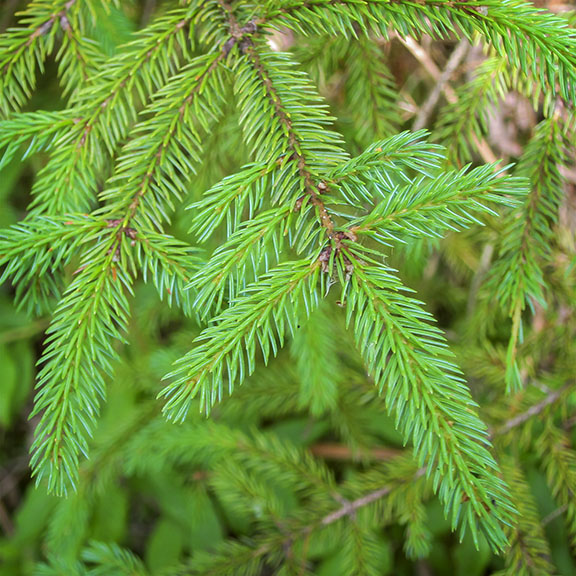
The logging industry changed huge swathes of the Adirondack landscape and represents the dominant human impact in the 19th and early 20th centuries. The first species to be targeted by loggers was Eastern White Pine, prized because its height and straight grain made it useful for constructing the masts of sailing ships. The most accessible stands of Eastern White Pine were in the southeastern region and along Lake Champlain, near established waterways. These were largely gone by 1830, although the ecological damage was limited to those areas where large stands of pine had flourished.
More important ecologically was the harvest of Eastern Hemlock. Hemlock bark, rich in tannin, was stripped and used to turn cow hides into shoe leather. The exploitation of hemlock emerged as an important part of the regional economy, beginning in about the middle of the 19th century. By the 1890s, when more profitable opportunities appeared in southern New York and Pennsylvania, more than a million acres of Adirondack forest land, much of it in the Lake Champlain and Lake George basins, had been cleared to obtain hemlock.
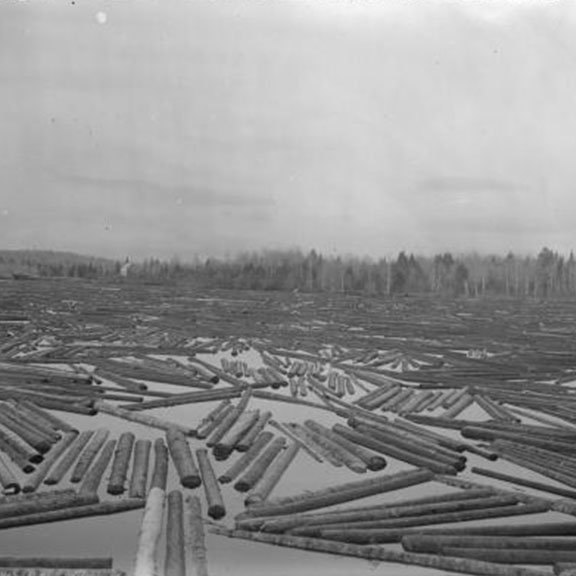
It was the quest for Red Spruce that led loggers deeper into the Adirondack interior. Red Spruce, although generally smaller than Eastern White Pine, has a straight grain and is easily cut and planed. It was also more abundant than Eastern White Pine, representing perhaps a quarter of the Adirondack forest at the time. The first wave of logging began in the 1830s and peaked in 1890, during which time loggers exploited spruce flats on river drainages. The heaviest exploitation during this time was in the eastern part of the Adirondacks, where the spruce logs were floated down rivers to feed saw mills in Glens Falls. The development of logging railroads allowed spruce logging operations to move into the less accessible regions.
The logging railroads also allowed loggers to turn their attention to hardwoods, which had previously escaped destruction in the Adirondack interior because hardwoods do not float and so cannot be transported via rivers. By the turn of the century, the railway network was being expanded, and mills were being built to exploit the hardwoods. By 1914, loggers were removing forests at a rate five times the rate of growth.
In the wake of logging operations and the railroads came fire. Loggers during this period left the tops of trees on the ground, providing fuel for fires, some of which were started by sparks from wood-burning engines. The damage done by the fires was intensified because this period of railway expansion and intense cutting in the late 19th and early 20th centuries coincided with several years of serious drought. According to estimates derived from a 1914 state Conservation Commission report, an estimated 850,000 acres or 14% of the land within the current boundaries of the Adirondack Park burned during this period.
These fires have had a longterm impact on forest dynamics in the Adirondacks. For instance, the most common birch in pre-settlement Adirondack forests was probably the Yellow Birch. Widespread post-logging fires in the early 1900s disproportionately benefited the Paper Birch, but now many of these relatively short-lived trees are approaching the end of their life cycle and dying out, to be replaced by other species.
Wilderness Ravaged: Exploiting the Minerals
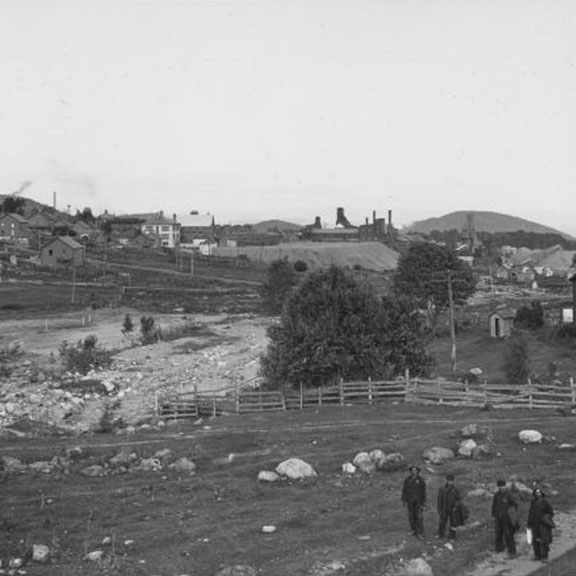
Exploiting the Adirondacks' mineral resources had a somewhat less pervasive impact on the environment than those industries involved in exploiting the forests. Mining began in the mid-1700s. Adirondack mines produced iron, titanium, wollastonite, and garnet. The iron and titanium mines have closed; mines extracting nonmetallic minerals and the zinc ores continue to be worked.
The most enduring and widespread impact of mining in the Adirondacks is associated with the use of hardwood to make charcoal for iron production. In the late 19th century, an estimated quarter of a million acres were clear-cut to make charcoal for the iron industry. Much of the cutting was concentrated near roads and railways, helping to create an image of a ravaged landscape that contributed to public pressure to save the Adirondacks.
The Recovering Wilderness: Ongoing Threats to Wilderness
Thanks in part to changes that undermined the economic viability of these activities and in part to the formation of the Adirondack Park to curtail and reverse the damages associated with farming, logging, and mining, the vast majority of woodland in the Adirondacks is in some stage of recovery from the initial human impacts summarized above, if, by "recovery", we mean that forests have returned to areas denuded by agriculture or logging. The logged-over woodland and fields have been largely reclaimed by vegetation.
Complicating this ongoing process is the fact that habitats in the Adirondacks are simultaneously coping with a cocktail of ongoing assaults, most notably in the form of air pollution (acid rain and mercury contamination), tourism, residential development, and a warming climate as well as natural disturbances such as blow downs and larger-scale natural events like the ice storm of 1998 and the hurricane of 1950.
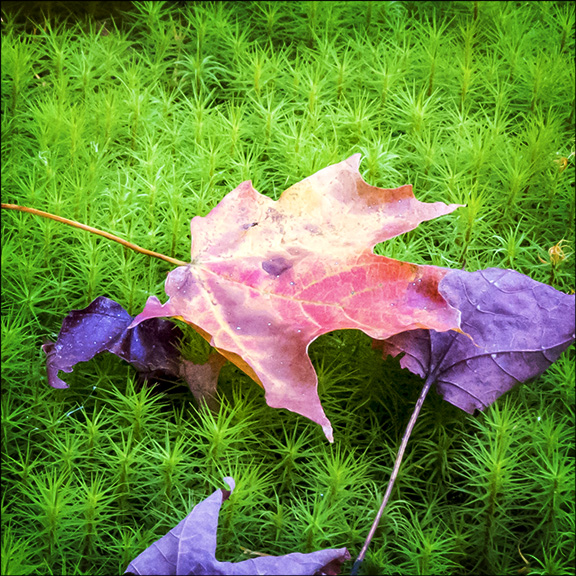
Air Pollution: Acid Rain and Mercury Deposition: Acid deposition and mercury deposition are two components of air pollution affecting Adirondack ecosystems. Both are consequences of fossil-fuel combustion; both have caused significant environmental harm to the Adirondacks. The Adirondack region is among the most acid-impacted regions in North America. More than 80 percent of the acid rain that falls on the Adirondack Park is generated outside of New York State, mainly by coal-fired power plants and fossil-fueled automobiles.
- The most dramatic impact of acid deposition on the Adirondack ecosystem is on the lakes, streams, wetlands, and other aquatic environments. Research conduced by the Adirondack Lakes Survey Corporation (ALSC) from 1984-1987 indicated that nearly 25% of the waters had pH values of 5.0 or less and that forty eight percent of the waters had little or no buffering capacity. In 1985, more than 700 Adirondack lakes and ponds were found to be too acidic to support their native life. In 1998, more than 500 lakes and ponds out of 2,800 in the Adirondack Park were too acidic to support the plants and fish that once existed there.
- Acid deposition has stressed Adirondack forests as a whole (primarily by reducing calcium levels in the soil and increasing the trees' vulnerability to weather and insect damage), shifting the composition of the forest in ways which will affect the ecosystem for decades (if not centuries) to come. Two species have experienced particularly heavy losses: Red Spruce and Sugar Maple. In regard to the Red Spruce, acid rain leaches calcium out of the needles and reduces the needles' ability to tolerate freezing temperatures. Acid rain also interferes with the tree's ability to acquire nutrients from the thin Adirondack soils. This combination of reduced freeze tolerance and nutrient stress, which makes the trees more susceptible to insects and disease, is thought to be responsible for the loss of roughly half of the high-altitude spruce forests in the Adirondacks. Researchers have also linked acid rain to the decline of Sugar Maples, which appear to be highly vulnerable to the loss of calcium in the soil caused by the nitric and sulphuric acid in acid rain.
- The direct effects of acid rain reverberate up the food chain, with negative consequences for Adirondack wildlife. Acidic water in Adirondack lakes disrupts the reproductive system of freshwater macro-invertebrates, plants, and fish populations. Water-dependent amphibians such as frogs and salamanders are also affected. Aluminum leaches from the soil into the water, altering the chemistry and clogging the fish's gills. Hundreds of lakes and ponds once teeming with trout and tadpoles, frogs and salamanders, are now clear and empty of such life. Although birds and mammals are not directly affected by water acidification, they are indirectly affected by changes in the quantity and quality of their food resources. Acid rain worsens mercury contamination of the park’s food web, by breaking down chemical compounds, turning harmless inorganic mercury into the toxic organic form. Birds and mammals that rely on fish are particularly susceptible. Loons, for instance, are especially susceptible to mercury contamination because they eat fish and accumulate mercury in their bodies over their lifetime, causing behavioral changes that can lead to decreased reproductive success and, thus, to declining populations. Northern River Otters are also subject to mercury accumulation because of the high proportion of fish in their diet.
The 1990 Clean Air Act, which restricted the fossil-fuel burning chemical emissions that increase acidity in the environment, has slowed the rate of damage and led to some recovery from these impacts. Adirondack lakes have become somewhat healthier, which in turn is helping to protect fish from climate change. Some lakes that were once considered dead are now producing healthy brook trout again. However, some species, including the economically valuable Sugar Maple, have failed to recover and, in fact, have continued to decline further. As a result, in the western Adirondacks, where the lakes are most acidified and the soils poorest in calcium, maples have stopped reproducing, and the forest under-story is dominated by young beeches.
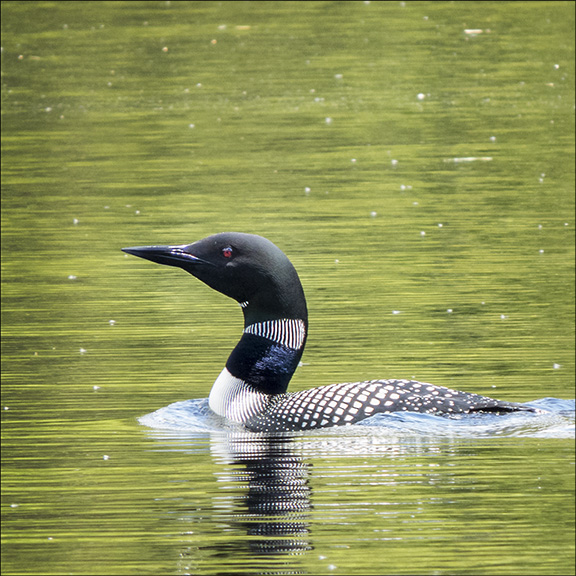
Recreation and Residential Development: Recreation and residential development present another threat to the recovering Adirondack wilderness.
- The Adirondack Park has seen large increases in residential development over the last several decades, primarily for second home construction. Between 1990 and 2004, over 13,500 new houses were permitted in the Park. Between 2005 and 2006, an additional 1,500 were added. Development and its associated loss of habitat poses a threat to the biological diversity of the Adirondacks by fragmenting forest systems and degrading water quality, New housing means new roads, driveways, power and water lines, leach fields, pets, invasive species, and other disruptions to the forest. Highly visible houses on hilltops and lake shores change the aesthetic character of the Park. The impact of increased residential development on wildlife depends in part on the pattern of development; clustering of development can help mitigate the impact of development on wildlife. For instance, a 2014 study on the effects of lake-shore development on the reproductive success of Common Loons revealed that clustering homes on one part of a lake to create buffers allows Common Loons to nest a distance away from developed areas, improving their reproductive success.
- Recreational uses of the Park also pose threats to the ecosystem. Recreational activities represent a leading factor in endangerment of plant and animal species. Negative effects on animals include decreased species diversity and decreased survival. While all recreational activity in the wilderness (even non-motorized and seemingly benign activities such as hiking and birdwatching) disrupt the environment to some degree, recreation involving motorized vehicles – all-terrain vehicles, snowmobiles, and motorized watercraft – is particularly damaging, involving not just disturbance of wildlife, but noise pollution, soil loss, vegetation disturbance, and spread of invasive species.
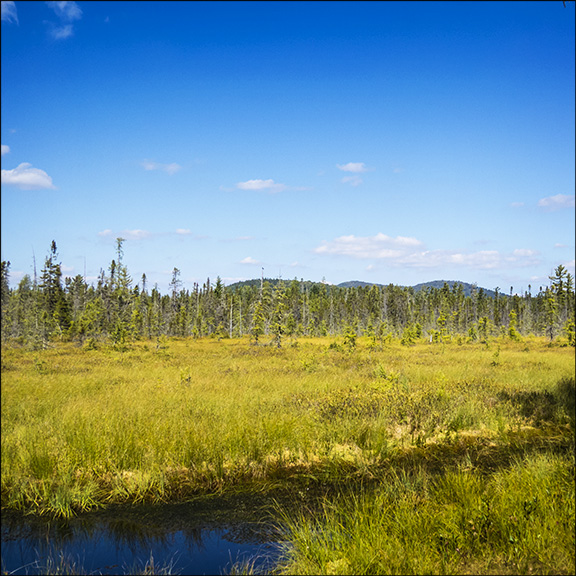
Climate Change: Perhaps the greatest long-term threat to the Adirondack Mountains is climate change. The Adirondack Park represents a transition zone between the temperate forests to the south and the boreal, spruce-fir forest of Canada. Many of the plant and animal species that have flourished here are at the southern end of their range. This means that Adirondack forests and the species dependent on them, are particularly vulnerable to warming temperatures.
Temperature and weather shifts associated with climate change have already occurred, as Adirondack weather becomes warmer and wilder. The Adirondack climate has warmed by about two degrees (Fahrenheit) over the last century. Warming has changed the timing of ice cover on some lakes, with ice forming later and melting earlier. For instance, on Mirror Lake in Lake Placid, by 2005, ice was forming 14 to 15 days later and melting 3 to 4 days earlier than it had done in the early 1900s.
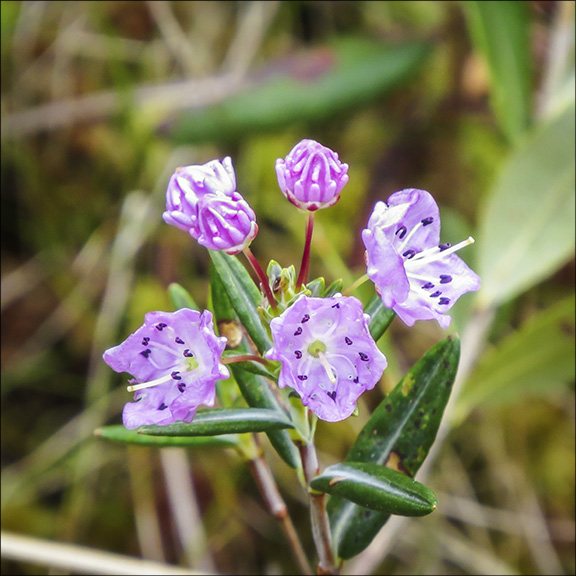
The temperature changes of the past few decades have already affected some species. For instance, a comparison of bird surveys conducted on Whiteface Mountain in 2013 and 2014 with analogous surveys forty years earlier revealed that many bird species have moved up in elevation, probably in response to rising temperatures. However, exploring the link between warming and species decline is complicated, because some of the changes documented in the last few decades have many different, interconnected causes. There is evidence, for instance, of a decline in the wetlands occupied by selected boreal bird species (such as Boreal Chickadee, Olive-sided Flycatcher and Rusty Blackbird). However, this trend may be due to other factors, such as increased development and recreation, working in combination with changing climate.
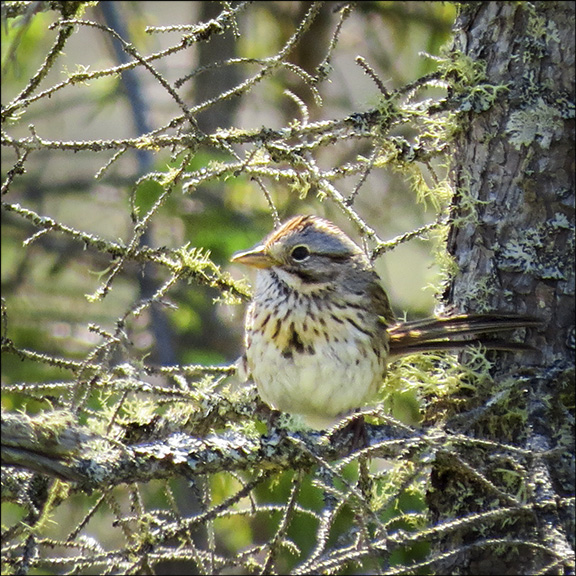
More striking shifts in the forests and wildlife of the Adirondacks will emerge in the coming decades, if (as projected) the warming trend continues. Even a best-case scenario projects a three to six degree increase in temperature by the 2080s. As the Park warms, spruce-fir forests will significantly decrease in the Adirondacks, and the boreal birds that dwell in this habitat also will decline. As boreal birds disappear from the Park, southern birds are expected to move in. The Carolina Wren, Tufted Titmouse, and Mockingbird have been observed in the Adirondacks in greater numbers than previously. As temperatures rise, non-native species that cannot survive the current Adirondack winters will likely replace native plants and animals. A shorter ice season for Adirondack lakes could alter lake ecology, making the lakes less suitable for cold-water species such as brook trout and lake trout.
References
Michael Kudish. Adirondack Upland Flora: An Ecological Perspective (The Chauncy Press, 1992), pp. 2-64.
Michael Kudish, "Adirondack First Growth Forests. How to Find and Map Them," Lecture delivered April 2012 at Paul Smith's College. Retrieved 19 October 2015.
E. H. Ketchledge. Forests and Trees of the Adirondack High Peaks Region (Adirondack Mountain Club, 1967), pp. 11-14.
Carol Reschke et al. Ecological Communities of New York State. Second Edition (NYS Department of Environmental Conservation, 2014).
Barbara McMartin. The Great Forest of the Adirondacks (North Country Books, 1994), pp. 10-11.
John Warren, "Identifying Adirondack First Growth Forests," Adirondack Almanack, 16 April 2012. Retrieved 13 January 2017.
William Gibbs Howard. Forest Fires. State of New York Conservation Commission Bulletin 10. 1 January 1914. Retrieved 25 January 2017.
Philip G. Terrie. Contested Terrain: A New History of Nature and People in the Adirondacks (Adirondack Museum, 1999).
Charles D. Canham, "Upland Forests of the Adirondacks. Reflections of Soils and a Record of Disturbance," William F. Porter, Jon D. Erickson and Ross S. Whaley. The Great Experiment in Conservation. Voices from the Adirondack Park (Syracuse University Press, 2009), pp. 60-70.
Roland W. Kays and Robert A Daniels, "Fish and Wildlife Communities of the Adirondacks," William F. Porter, Jon D. Erickson and Ross S. Whaley. The Great Experiment in Conservation. Voices from the Adirondack Park (Syracuse University Press, 2009), pp. 71-86.
William F. Porter, "Wildlife Exploitation in the Adirondacks. From Beavers to Biodiversity," William F. Porter, Jon D. Erickson and Ross S. Whaley. The Great Experiment in Conservation. Voices from the Adirondack Park (Syracuse University Press, 2009), pp. 87-86-95.
James McLelland and Bruce Selleck, "Mining the Adirondacks," William F. Porter, Jon D. Erickson and Ross S. Whaley. The Great Experiment in Conservation. Voices from the Adirondack Park (Syracuse University Press, 2009), pp. 96-101.
William F. Porter, "Forestry in the Adirondacks: An Economy Built on a Handful of Species," William F. Porter, Jon D. Erickson and Ross S. Whaley. The Great Experiment in Conservation. Voices from the Adirondack Park (Syracuse University Press, 2009), pp. 102-113.
John C. Kricher and Gordon Morrison. A Field Guide to Eastern Forests of North America(Houghton Miflin, 1988).
Jerry Jenkins. The Adirondack Atlas: A Geographic Portrait of the Adirondack Park (Syracuse University Press & the Adirondack Museum, 20014), pp. 98-111.
Jerry Jenkins. Climate Change in the Adirondacks: The Path to Sustainability (Cornell University Press, 2010).
Paul Schneider. The Adirondacks. A History of America's First Wilderness (Henry Holt and Company, Inc., 1997), pp. 137-147, 201-217.
James M. Ryan. Adirondack Wildlife: A Field Guide (University of New Hampshire Press, 20018), pp. 37-41.
Jerry Jenkins et al. Acid Rain and the Adirondacks: A Research Summary (Adirondack Lakes Survey Corporation, 2005).
Kevin L. Civerolo and Karen M. Roy, " On the Road to Recovery: Acid rain and the Adirondacks," New York State Conservationist, April 2013. Retrieved 6 January 2017.
Colin Beier et al. Integrating effects of climate change, acidic deposition and insect defoliation on sugar maple (Acer saccharum) growth and yield in the Northern Forest. Northeastern States Research Cooperative. May 2014. Retrieved 6 January 2017.
Nina Schoch and Allyson Jackson. Adirondack Loons — Sentinels of Mercury Pollution in New York’s Aquatic Ecosystems (Biodiversity Research Institute, 2012). Retrieved 6 January 2017.
New York State Energy Research and Development Authority (NYSERDA). Environmental Monitoring, Evaluation and Protection (EMEP). Acid Rain – Learning From the Past and Looking to the Future: A Primer (September 2005). Retrieved 6 January 2017.
Lovett, G.M., and T.H. Tear. 2008. Threats from Above: Air Pollution Impacts on Ecosystems and Biological Diversity in the Eastern United States. The Nature Conservancy and the Cary Institute of Ecosystem Studies.
Charles T. Driscoll, et al, "Human Impacts from Afar," William F. Porter, Jon D. Erickson and Ross S. Whaley. The Great Experiment in Conservation. Voices from the Adirondack Park (Syracuse University Press, 2009), pp. 114- 127.
Adirondack Council. "Progress on Acid Rain is Helping Fish Survive Climate Change," 5 January 2017. Retrieve 6 January 2017.
Evans, Celia A., Lucas, Jennifer A. and Twery, Mark J. 2005. Beech Bark Disease: Proceedings of the Beech Bark Disease Symposium. Gen. Tech. Rep. NE-331. Newtown Square PA, US. Department of Agriculture Forest Service. Northern Research Station.
Adirondack Council. Adirondack Waters: Resource at Risk. (Adirondack Council, 2008).
Peter Bauer, "Development Rates and Patterns in the Adirondacks," The Great Experiment in Conservation. Voices from the Adirondack Park (Syracuse University Press, 2009), pp. 157 – 168.
M.J. Glennon, M. J. and W.F. Porter, " Development in the Adirondack Park, New York: Projections and Implications, " in Frontiers in Ecological Economic Theory and Application (J. D. Erickson and J. M. Gowdy, eds.). Edward Elgar, Cheltenham, UK. 2007 pp. 149-168. Retrieved 6 January 2017.
Spilman, C. A., Schoch, N., Porter, W. F., & Glennon, M. J. (2014), "The effects of lakeshore development on common loon (gavia immer) productivity in the Adirondack Park, New York, USA," Waterbirds, 37(SP1), 94-101.
Courtney L. Larson et al, "Effects of Recreation on Animals Revealed as Widespread through a Global Systematic Review," 8 December 2016. Retrieved 7 January 2017.
Peter Bauer. Rutted and Ruined: ATV Damage on the Adirondack Forest Preserve (Protect the Adirondacks, 2003, Reprinted 2013). Retrieved 7 January 2017.
J. Curt Stager, Stacy McNulty, Colin Beier, and Jeff Chiarenzelli. "Historical Patterns and Effects of Changes in Adirondack Climates since the Early 20th Century," Adirondack Journal of Environmental Studies, Volume 15, No. 2 (2009). Retrieved 7 January 2017.
Mike Lynch, "Climate Change is Altering Nature’s Clock," Adirondack Almanack. 15 July 2015. Retrieved 7 January 2017.
Rubenstein, M.A., and M.J. Glennon. 2015. Phenological asynchrony in populations of migratory birds as a consequence of climate change: a literature review. Wildlife Conservation Society, Adirondack Program Technical Paper #6. Retrieved 7 January 2017.
Colin M. Beier & John C. Stella & Martin Dovčiak & Stacy A. McNulty, "Local climatic drivers of changes in phenology at a boreal-temperate ecotone in eastern North America, " Climatic Change, November 2012, Volume 115, Issue 2, pp 399–417.
Adirondack Council. Climate Change. Retrieved 8 January 2017.
Michale J. Glennon, " Dynamics of Boreal Birds at the Edge of Their Range in the Adirondack Park, NY," Northeastern Naturalist, March 2014, Vol. 21, Issue 1.
Mike Lynch, "Survey Finds Birds Are Moving Uphill On Whiteface Mountain," Adirondack Almanack, 18 August 2015. Retrieved 8 January 2017.
